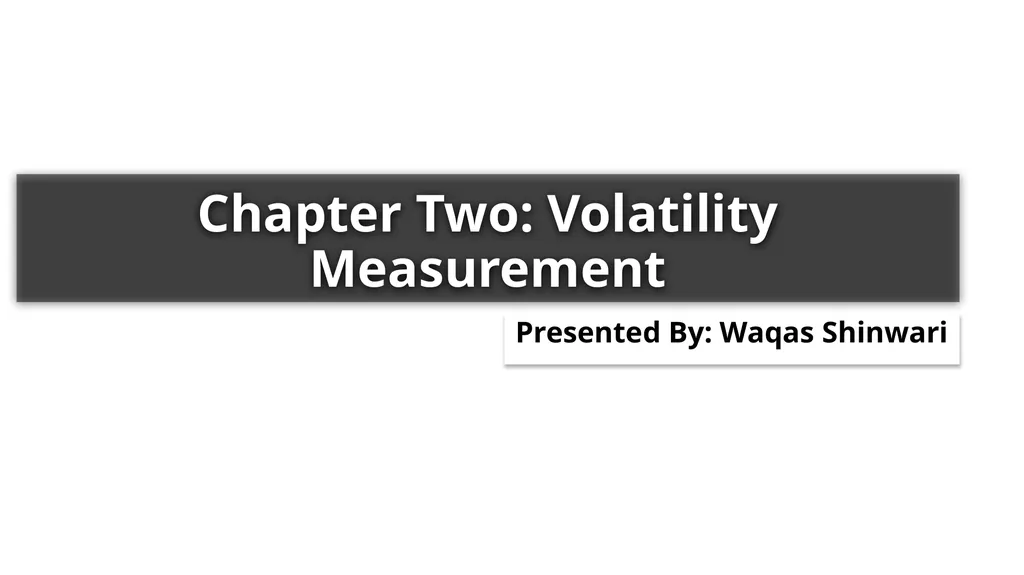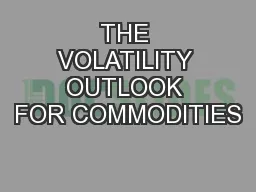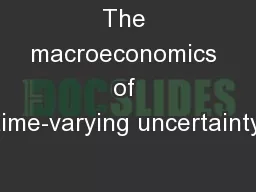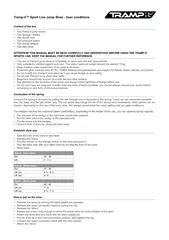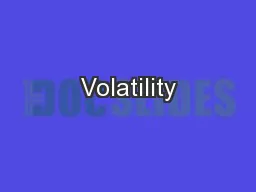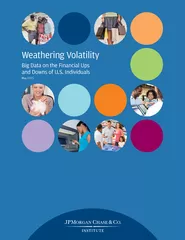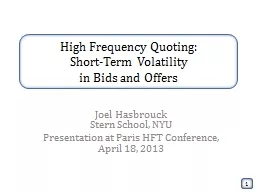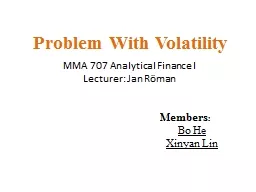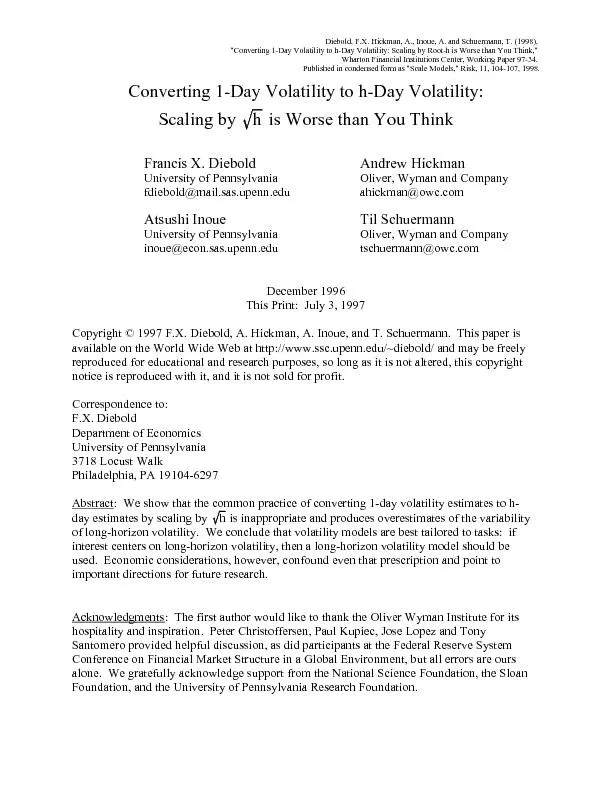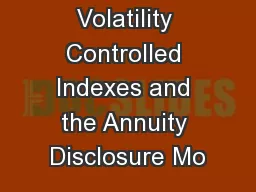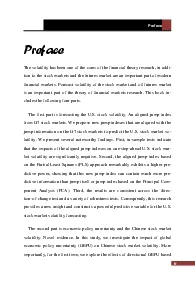Chapter Two: Volatility Measurement Presented By:
Author : mitsue-stanley | Published Date : 2025-06-27
Description: Chapter Two Volatility Measurement Presented By Waqas Shinwari Objectives of the Chapter To know about volatility To know about applications of volatility in Finance To know about different approaches of estimating Volatility Simple
Presentation Embed Code
Download Presentation
Download
Presentation The PPT/PDF document
"Chapter Two: Volatility Measurement Presented By:" is the property of its rightful owner.
Permission is granted to download and print the materials on this website for personal, non-commercial use only,
and to display it on your personal computer provided you do not modify the materials and that you retain all
copyright notices contained in the materials. By downloading content from our website, you accept the terms of
this agreement.
Transcript:Chapter Two: Volatility Measurement Presented By::
Chapter Two: Volatility Measurement Presented By: Waqas Shinwari Objectives of the Chapter To know about volatility To know about applications of volatility in Finance To know about different approaches of estimating Volatility Simple Variance EWMA Model GARCH Model What is Volatility? Volatility is a statistical measure of the tendency of a market or security to rise or fall sharply within a period of time Volatility is a statistical measure of the dispersion of returns for a given security or market index Volatility has a huge use in finance and at a basic level is a proxy for the riskiness of an asset. Applications of Volatility in Finance Volatility has wide ranges of applications in finance like: Capital Asset Pricing Models (Beta Estimation) Markets forecasting (stock prices, indices etc.) Valuation of Derivatives (e.g. Option Pricing) Value at Risk (VaR) models Measures of Volatility Volatility can be measured through: Current Market Prices (Implied Volatility) Historical Prices Proxies of Volatility include: Variance Standard Deviation Beta Measures of Volatility – Implied Volatility Implied Volatility is used in Option’s Pricing (Black Scholes Model) Given the current market price, model can generate a volatility value This value is implied by current market price Measures of Volatility - Historical Another approach is to use historical data and calculate volatility Under historical approach, volatility can be either: Unconditional Volatility Conditional Volatility Unconditional Volatility If today’s volatility does not depend upon yesterday’s volatility, it is said to be unconditional Predictable and cyclical in nature and sometimes due to occurrence of particular events In financial markets, Empirical research shows that volatility is conditional in majority cases Conditional Volatility Conditional volatility is more realistic Conditional volatility value depends to some extent on the previous periods volatility Conditional volatility can be: Unweighted (simple std. Deviation) Weighted (EWMA, GARCH) Unweighted Volatility For instance, smallest companies are given equal weight to the largest companies in an equal-weighted index fund. Where weights of each observation is equal We can calculate the weighted average through simple average Equal weight/Unweight is a type of weighting that gives the same weight, or importance, to each stock in a portfolio or index fund Weighted Volatility These measures assign more weights to recent data points and less weights to distant data points The reason is that current volatility is more related to recent past than to distant past ‘Weighting’ mathematical process by which figures and/or components are adjusted to reflect
